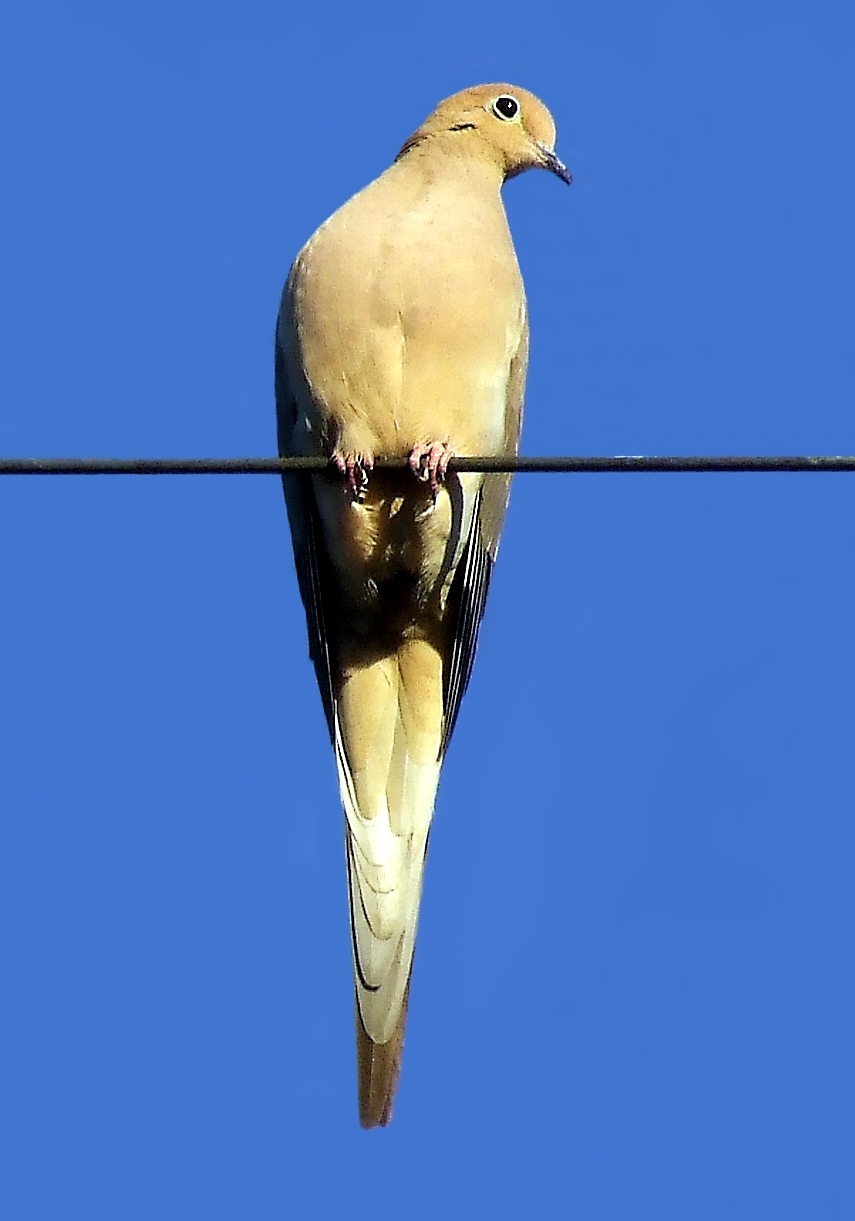I’m sitting in my study with the windows open, listening to my favorite bird singing his love song. This bird is probably the first bird I ever was able to identify by sound because of its signature song—a low coo followed by a high note and two or three low coos. I found his song comforting when I lived away from home, and now I stop what I’m doing to listen. The bird, as you’ve probably guessed, is the mourning dove (Zenaida macroura). It’s a member of the pigeon family and one of eight species in that family native to North America.
Back in 2011 when the Iowa Legislature added Iowa to the states where hunting mourning doves is legal, I was not enthusiastic about the decision. Hunters were though, and annually across the 41 states where it’s legal, they take between 15 and 20 million birds a year. This doesn’t seem to diminish the population, though. It hangs in there around 400 million in North America, including Canada and Mexico. Mourning doves manage this because a single pair mated for the season will produce from three to six clutches of eggs in a year, averaging two eggs each. They also thrive as edge species, and we humans create more of this type of habitat each year through deforestation.
The call I love so much is the males wooing females. They have an elaborate ritual where the male perches, sings his song, then takes off flying by flapping his wings noisily. When he reaches 100 feet or so of altitude, he spreads his wings and executes a spiraling glide back to his perch. When a female thinks a male is good enough to father her chicks, they form a pair bond that will last through the year. He selects a nesting site, usually in a tree, and they begin building a nest. He brings her twigs and other supplies, then hops onto her back to supervise the construction. She makes a platform of sorts but not the woven cup-shaped nests I think of. These open platforms don’t lend much protection from cats, rat snakes, blue jays, crows, and squirrels, who find those eggs and squabs to be quite tasty. The mortality rate for mourning doves is about 58% per year for adults and 69 % per year for juveniles. It’s a very dangerous world out there. The males help incubate the eggs and when they hatch, both male and female feed the babies crop milk, a substance produced in their crops. They introduce seeds gradually, and by the time the nestlings fledge at about two weeks, they’re eating seeds like their parents.
Mourning doves are about 12 inches long, have a wing span of about 17 inches, and weigh between 3 and 5 ounces. That’s not much of a meal. They’re tannish-gray with black-bordered white spots on the tips of their wing feathers. This coloration makes good camouflage. They have light blue skin around brown eyes and dull red legs and feet. Males have a wash of pink to their breast feathers and blue-gray on the top of their heads.
They eat seeds almost exclusively, preferring pine nuts, sweetgum seeds, and the seeds of pokeberry, amaranth, canary grass, corn, sesame, and wheat. They find their food by walking around on the ground picking up seeds and stashing them in their large crops. The crop is located at the base of the neck in front of the breastbone. It’s part of the digestive system where the seeds are stored and ground up. When the crop is full, they fly away to a safe place to grind and digest the seeds. Lots of information aimed at hunters is available online about creating mourning dove habitat and food supplies. They prefer just about any edge or open spaces except marshes, which is why they sing in the woods on Owl Acres.
Mourning doves migrate from Iowa each fall, heading for Texas and Mexico. They’ll be back between March and May.
This year I’ve heard more mourning doves than I recall hearing in the past couple of years. I’m happy to know that their population is stable in spite of everything, and that I’ll hear that gentle, soothing call throughout the rest of the summer.
Photo by Showmanradio Alt text: Mourning dove the way Iowans usually see them, sitting on an overhead wire, out by the road. Gray-tawny bird with slender, slightly curved beak.

2 comments
Their cooing reminds me of a story I must tell you sometime, Karen. Dietre
I love their call as well!